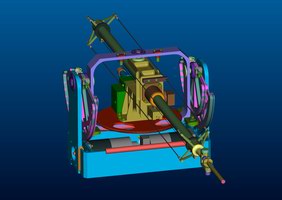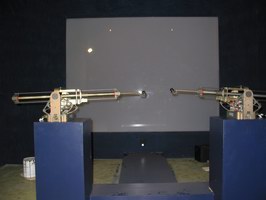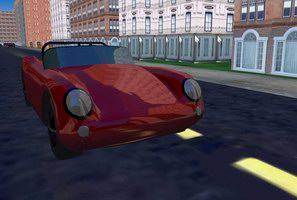Virtual (VR) and mixed reality (MR) technologies are now becoming sufficiently developed so that simulations of cultural or architectural sites, or virtual environments (VEs) for design, especially using immersive (head-mounted, workbench or CAVE®-like) displays, are successful in making users feel immersed in the environment.
Coupled with interactive technologies that allow visitors of the virtual sites to choose their travel path or even perform actions that trigger responses from the VE, these virtual experiences become significantly richer and more interesting. Up to now, this much has already been achieved and has resulted in several successful examples of virtual worlds developed worldwide for research and design, training, manufacturing, and entertainment. Nonetheless, such environments suffer either from a lack of realism or a low degree of interactivity, due to technological and methodological constraints, and typically do not include sound.
Realism with Interactivity
In order to provide a good basis for constructive activity, the simulated environment must be "authentic", meaning that it must reflect as truly as possible the familiar-to-the-user situation of the surrounding environment. In other words, placing the user in an authentic environment presupposes the creation of a high-quality simulation of that environment.
The use of realistic virtual or augmented visual and auditory elements is paramount in making this exciting and successful. At the same time, innovative interfaces are essential so that the virtual environment can be dynamically built by the learner/visitor/designer using seamless techniques in a way that helps command the content being built by fostering multiple interpretations.
To achieve these objectives, CREATE will provide and adapt novel technologies which will allow the capture of realistic models of real scenes, using modelling-from-images techniques, and subsequently allow the user to even virtually change the real lighting conditions, with consistent and realistic lighting for additional virtual objects.
To achieve realism without sacrificing performance, it will be necessary to adapt fast display techniques for complex geometry, natural structures and elements (vegetation etc.) to a real-time context. To complete a successful interactive experience that is situated in as close to a real-world context as possible, CREATE will also include real-time sound simulation and virtual population methods, as well as natural modes of interaction with the virtual environment, including the use of haptic interfaces.
The goal of CREATE is to innovate on many fronts, both conceptual and technological, through the careful selection and combination of significantly challenging issues that merge the boundaries between a number of disciplines:
- Technological Advancement Grounded on a Theoretical Perspective
- Realism with Interactivity in Virtual Environments
- Model Re-lighting/De-lighting
- Realistic Lighting
- Realistic Virtual Population
- Realistic Sound
- Managing the complexity for interactivity
- Evaluating a Virtual Environment
- Novel Interfaces and Modes of Interaction Informed by User Needs




